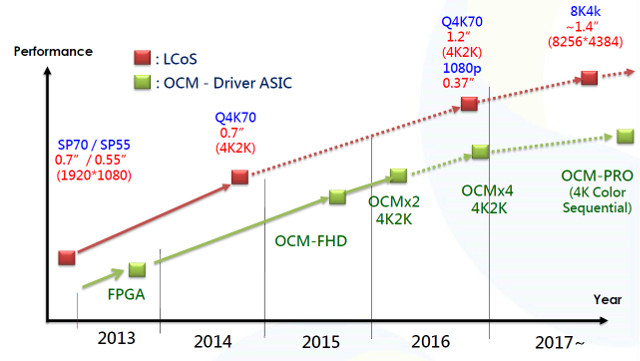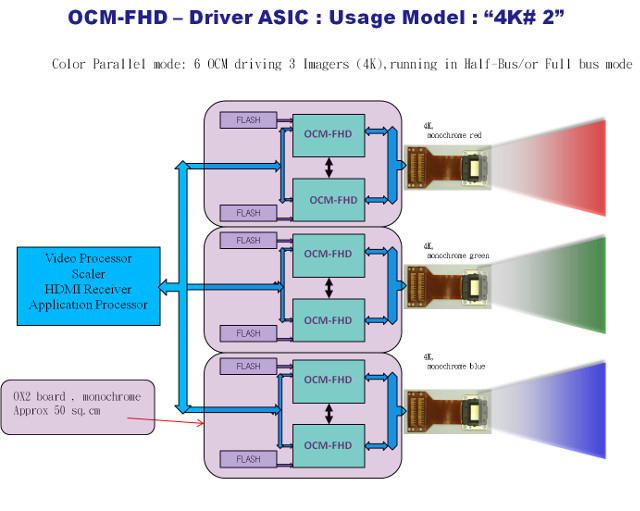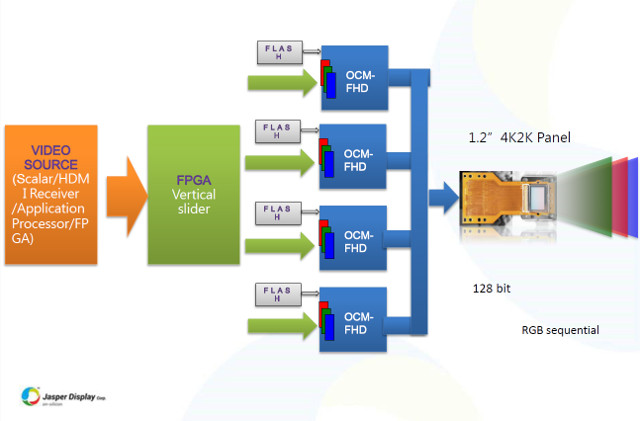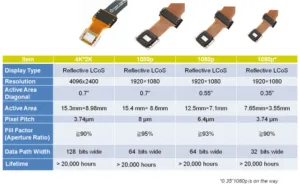On a recent visit to Jasper Display in California, we had a chance to learn a lot about what the company is doing. Liquid Crystal on Silicon (LCoS) has been at the heart of the company for 18 years including a number of processor companies like S-Vision and eLCOS. The list of current LCoS panels along with a roadmap for development of the panels and associated driver IC (OCM) are shown below.

The 4K LCOS panel (actually 4096 x 2400) panel in a 0.7” diagonal that features the smallest pixel pitch to date (3.74 microns). The 4K controller is implemented today in two small PC boards using a mid-size FPGA that addresses the panel at a 10KHz rate to deliver digital pulse width modulated signals. The company says it has refined the algorithms for these pulses to help minimize fringing effects at the pixel edge to deliver very smooth images with no discernible pixel structure.
In Q1’16, a new controller board, the “OX2” will be available to facilitate the commercialization of 3-panel LCoS projection solutions. This is driven by a pair of their own ASIC driver/controllers (one chip modules or OCM developed for 1080P). Each OCM includes an embedded frame buffer memory. Each OX2 board is a monochrome channel so you need three of these for a full color solution. The schematic for its use is shown below.

By the end of 2016, a field sequential color OCM based solution with a new 4K panel will be available – perhaps for near to eye VR applications.

A larger panel is also on the roadmap to support higher lumen applications with a 1.2” 4K planned for the end of 2016 along with a pixel shrink for the 1080p version to 0.37 inches. Finally, a 1.4” 8K panel is planned for 2017.
Jasper is also working on a 4K projection solution to showcase the performance of their 4K panel, as this is the only practical way to sell imagers. We saw a demo of the prototype, which is a retrofit of a 0.7” 1080p-based optical projector (so the lens was challenged in the corners). The team still has some work to do to eliminate some visible artifacts and issues, but the image was very smooth and had surprisingly strong color performance for a lamp-based projector. (CC)

